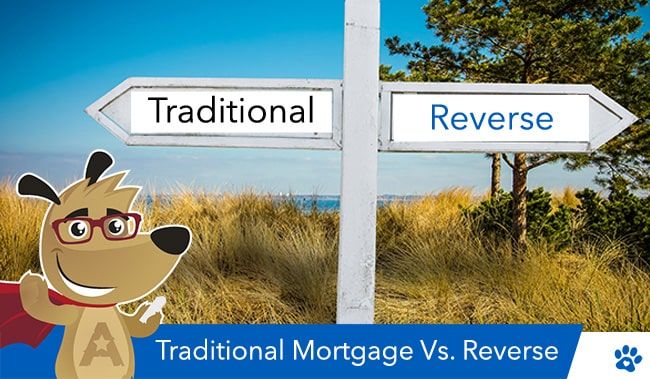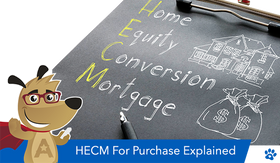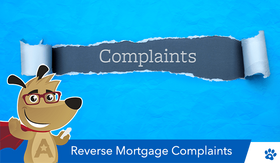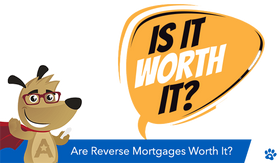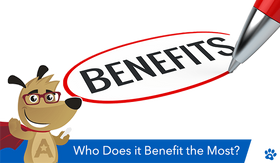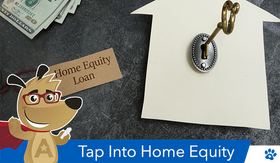Reverse Mortgage vs. Traditional Mortgage: Which Is Best for You?
Reverse mortgages and traditional mortgages have their own advantages and disadvantages that seniors should weigh up before deciding which to choose
Updated March 19, 2025

Many seniors in the US turned to reverse mortgages to supplement their incomes during the coronavirus pandemic. Yet, many seniors still don't know much about reverse mortgages and how they differ from traditional or "forward" mortgages. While both are loans, a traditional mortgage requires regularly scheduled payments directly from the borrower. In contrast, in a reverse mortgage, no monthly payment is required, and the interest due on the outstanding balance is added to the balance each month.
Both have advantages and disadvantages and are very different products suited for different homeowners. Keep reading to discover the key considerations of each, which one is better for seniors, and why.
» Confused about reverse mortgages? Learn all you need to know with our simple guide
Meet the expert
Michael G. Branson, CEO of All Reverse Mortgage, Inc. and moderator of ARLO™, has 45 years of experience in the mortgage banking industry. He has devoted the past 20 years to reverse mortgages exclusively.
Financial Considerations
Repayment
A traditional mortgage requires mandatory monthly payments over a specified period of time until the loan is repaid in full. The most commonly utilized term is a 30-year term, but shorter-term loans are also available. The shorter the term, the higher the monthly payment will be.
On the other hand, a reverse mortgage requires no monthly mortgage payment. However, there are benefits to making payments on your reverse mortgage. The interest due on a reverse mortgage is added to the loan balance monthly. Thus, the loan balance increases over time. Repayment is only due once you no longer live in the home or cannot meet the loan terms.
Upfront costs
With both a traditional and reverse mortgage, there will be closing costs to obtain the loan, such as administrative fees, legal charges, appraisals, and more. However, the fees on the reverse mortgage are higher due largely to the Mortgage Insurance premium charged by HUD to insure the Home Equity Conversion Mortgage (HECM). The mortgage insurance on the HECM provides significant guarantees to the homeowner. The guarantees are that your available funds cannot be reduced or frozen due to adverse market factors and that the loan will be non-recourse, which means you can never owe more than the property's value. Additionally, the closing costs are almost all financed through the loan, just like traditional mortgages, and borrowers usually only come out of pocket for the appraisal cost.
Impact on heirs
A traditional mortgage requires regularly scheduled payments, which results in the reduction of the outstanding mortgage balance.
A reverse mortgage does the opposite. The interest due on the loan is added to the loan balance each month, meaning that the balance steadily increases over time. If a reverse mortgage is in place, the heirs may see a smaller inheritance upon the borrower's death.
Whether you have a traditional or reverse mortgage, the heir to your home still has to satisfy the debt. With a reverse mortgage, the heir can refinance the loan to keep the property, pay it off with other funds, or sell it to pay off the balance. The reverse mortgage is non-recourse, which means that the heir will never have to worry about paying an amount over the property value.
» Learn more: Critical steps for heirs of a reverse mortgage
Flexibility and usage
Receiving funds
A traditional mortgage is known as a Closed-End loan, which means that all available funds being borrowed are issued at the time of loan consummation. Those funds will pay off any existing mortgage(s) or lien, the financed closing costs, and a lump sum of cash to the borrower if the loan is a cash-out refinance.
A reverse mortgage can either be Closed-End or Open-Ended. An Open-Ended loan provides excellent flexibility as funds can be issued in several ways, including a line of credit, monthly payment distributions, a lump sum, or a combination of all options. With the line of credit option, the unused funds in the available line of credit are subject to a line of credit growth rate, which allows access to even more funds over time than initially qualified for.
Supplementing income
A borrower may be able to withdraw a lump sum from their home equity via a traditional mortgage. However, the mandatory monthly payments are likely higher per month than the previous mortgage due to borrowing more money. This increased monthly expenditure will not aid in supplementihomeowner'sner's income and, if so, will likely take away from the lump sum proceeds over time, leaving the homeowner in a similar situation they were in before while owing more on the home.
A reverse mortgage does not require monthly mortgage payments, significantly benefiting homeowners looking to improve their monthly cash flow. Additionally, the borrower can take their proceeds in a monthly payment plan, which provides for a monthly distribution directly deposited to their account to supplement their other income sources. The way a reverse mortgage works makes it the best loan program available to supplement your income.
» Did you know you can use a reverse mortgage to combat inflation Here's how
Limitations
A reverse mortgage has no additional restrictions on how borrowers spend their proceeds compared to a traditional mortgage. All proceeds are advanced to the borrower's bank account. From there, they can spend the money how they choose.
We suggest using our Reverse Mortgage ARLO™ Calculator to quickly compare rates and costs to find the best reverse mortgage option.
Summary of the pros & cons
Traditional mortgage
Pros
- Available to all age groups (18+)
- Yodon't’t have to live in the mortgaged home
- Lower closing costs on average
Cons
- Mandatory monthly mortgage payments over many years
- No flexibility in how the proceeds can be disbursedDoesn'tt improve monthly cash flow
Reverse mortgage
Pros
- No mandatory monthly mortgage payments
- Flexibility in receiving proceeds (line of credit, monthly payment distributions, lump sum, or combination of all)
- Improved monthly cash flow
- Unused line of credit grows in availability, providing access to more funds over time.
- HECM program insured by the government providing guaranteed access to line of credit funds regardless of market conditions
Cons
- Only available to seniors (age 62 years or older) on the HECM program and 55 or older on private reverse mortgage programs in some states
- Higher closing costs on average
Final verdict: which is better for seniors?
Put simply, it depends on the situation and the senior's intentions. If your primary concern is maintaining an equity position in your property as part of an inheritance for your heirs, or if you anticipate purchasing another home and using the equity from your existing property, there may be better choices than a reverse mortgage.
However, the benefits of a reverse mortgage can result in a better quality of life for seniors by giving them access to funding as they need it without the burden of monthly payments. This can be used to provide additional monthly income, fund home repairs, pay for in-home healthcare, prevent the foreclosure of a traditional mortgage, or even pay off high-interest debt.
If you understand the reverse mortgage program, the benefits and uses substantially outweigh those of the traditional mortgage, making it a worthwhile choice for seniors.
» Need more info? Reach out to a qualified reverse mortgage lender or continue your journey learning how reverse mortgages work.



